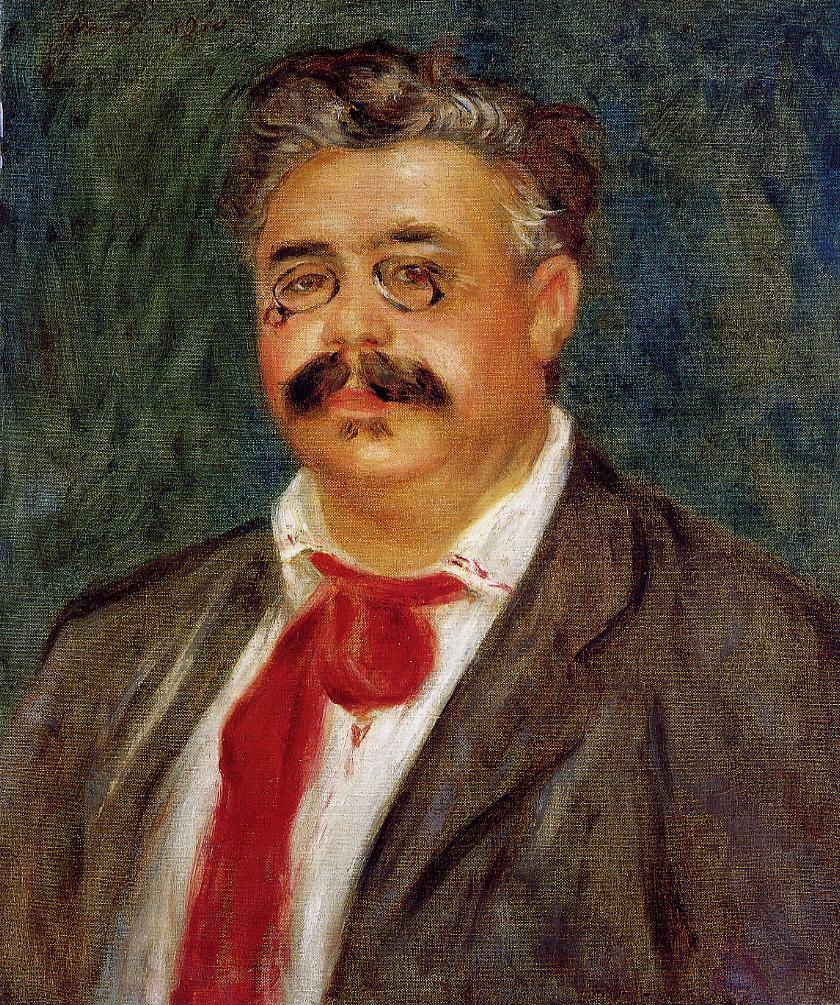art-Renoir.com
Auguste Renoir 1841-1919
Auguste Renoir - Wilhelm Muhlfeld 1910
 Wilhelm Muhlfeld |
From Christie's auction house:
This painting will be included in the forthcoming Renoir catalogue critique being prepared by the Wildenstein Institute and established from the archive funds of François Daulte, Durand-Ruel, Venturi, Vollard and Wildenstein.
This painting will be included in volume III or subsequent volumes of the Catalogue raisonné des tableaux, pastels, dessins et aquarelles de Renoir being prepared by Guy-Patrice and Michel Dauberville published by Bernheim-Jeune.
The present portrait was painted while Renoir was on holiday at Wessling am See near Munich in August 1910. When writing his memoirs of his father, Jean Renoir recalled this idyllic summer spent with 'our friends the Thurneyssens' (J. Renoir, Renoir, My Father, London, 1962, p. 373). This was the only foreign trip the artist undertook in the Twentieth Century, a testament to the strength of his friendship with Dr. Fritz Thurneyssen and his wife which dated from two years earlier when Renoir painted his Portrait de Madame Thurneyssen in Cagnes (sold at Christie's, London, 6 February 2007, lot 20). It was surely through this engaging couple and their wide circle of cultured friends that Renoir met the subject of the present painting, Wilhelm Mühlfeld, a gifted oboist, violinist, orchestra conductor and composer. In a letter to Maurice Gangnat, Gabrielle Renard (see lot 407) recorded that Renoir 'painted some views of the lake as well as a beautiful portrait of Monsieur Muhlfield (sic)' (quoted in C. Wright, Renaissance to Impressionism, Masterpieces from Southampton City Art Gallery, London, 1998, p. 111).
That a very similar portrait (Southampton City Art Gallery, inv. no. 3/1964) exists is rather unusual in the artist's practice however we can only assume that it was repeated at the sitter's request. Both portraits entered the collection of the musician, who passed away just two years after they were painted, and then they were sold by the Munich dealer Georg Gaspari to one of Japan's foremost collectors of Impressionist and Modern Art in the first quarter of the Twentieth Century, Kojiro Matsukata. A wealthy businessman, Matsukata became the first head of the Kawasaki Ship Building Company by the age of thirty one. Western art held a great fascination for him and his acquisitions of paintings and sculptures by Renoir, Rodin, Cézanne Delacroix and Gauguin amongst others during his European travels from 1916 to 1918 and again from 1921 to 1922 now form the basis of the Matsukata Collection at the National Museum of Western Art, designed by Le Corbusier and opened to the public in 1959.